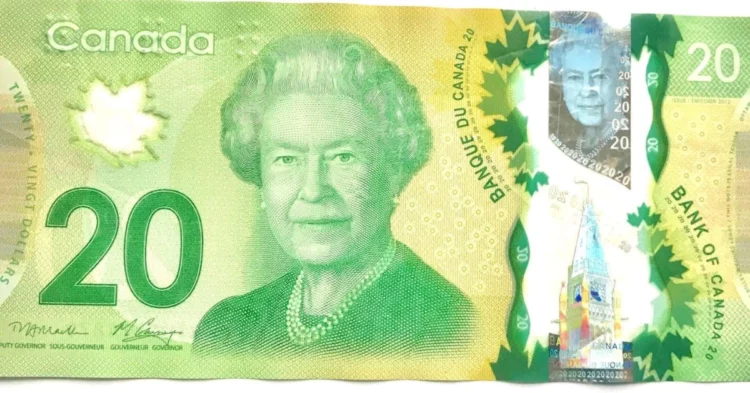Loonie Poised for Modest Gains Against the U.S. Dollar Over the Next Year
The Canadian dollar is forecast to appreciate moderately against the U.S. dollar over the coming year, according to a recent Reuters poll. This projected rise is largely driven by expectations that the U.S. Federal Reserve will begin cutting interest rates in 2026, weighing on the greenback’s strength.
From September 26 to October 1, Reuters surveyed 38 foreign exchange analysts. The median forecast predicted that the Canadian dollar — often referred to as the loonie — would gain 2.8% over the next three months, reaching 1.36 per U.S. dollar (or roughly 73.53 U.S. cents). This mirrors the forecast made in the previous month’s survey.
Table of Contents
Longer-Term Outlook Projects Continued Strengthening
Looking ahead to the next 12 months, analysts anticipate a 3.5% appreciation in the Canadian dollar, bringing the USD/CAD exchange rate to 1.35. This is a slight increase in optimism from the 1.3415 forecast seen in the earlier survey. However, despite this predicted uptick, the Canadian dollar remains under pressure in the short term, having recently touched a four-month low.
Federal Reserve Rate Cuts Expected to Pressure the Greenback
The anticipated appreciation of the loonie is closely tied to expectations for the U.S. Federal Reserve’s monetary policy. Analysts believe that continued weakness in the U.S. labor market will force the Fed to implement multiple interest rate cuts in 2026, making the U.S. dollar less attractive to investors.
“Weakness on the USD leg should spill over onto the CAD leg and cause USD-CAD to move lower,” said Sarah Ying, head of foreign exchange strategy at CIBC Capital Markets. She expects the Bank of Canada to conclude its interest rate easing campaign soon, which is already more advanced than that of its U.S. counterpart.
The Bank of Canada recently lowered its benchmark interest rate to 2.50%, and investors are currently pricing in only one additional rate cut from the Canadian central bank.
Canadian Economy Avoids Recession for Now
While Canada’s economy contracted at an annualized rate of 1.6% in the second quarter, more recent economic indicators suggest that the country may avoid falling into a technical recession. The Canadian output gap — a key measure of economic slack — is expected to shrink, indicating some stabilization.
Sarah Ying noted that “the output gap in Canada is expected to get less negative as peak tariff uncertainty is behind us,” signaling some relief for the loonie. However, she also warned of a potential risk to this outlook.
USMCA Trade Agreement Could Disrupt Currency Forecasts
A major uncertainty that could derail the loonie’s expected gains is the fate of the United States-Mexico-Canada Agreement (USMCA), which governs a significant portion of North American trade. The agreement is scheduled for a joint review in 2026, and preliminary consultations have already begun in the U.S., Canada, and Mexico.
Ying cautioned that the Canadian dollar could weaken if political tensions reignite around trade, particularly if former U.S. President Donald Trump — or another administration — moves to renegotiate or challenge the agreement. “We are wrong if Trump starts to challenge USMCA, as trade negotiations remain ongoing,” she said.
The USMCA has largely protected Canadian exports from U.S. tariffs, making it a critical pillar of Canada’s economic relationship with its southern neighbor. Any instability surrounding the agreement could introduce volatility to the loonie’s trajectory.

